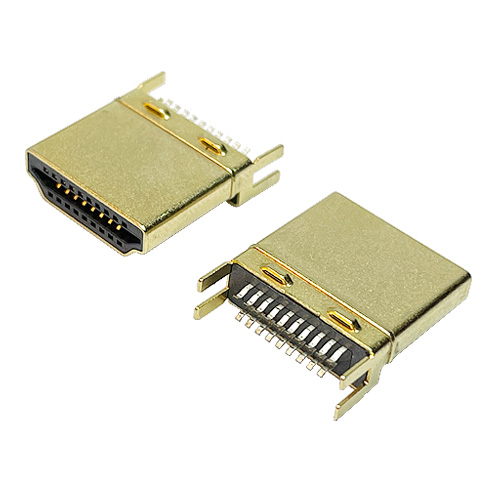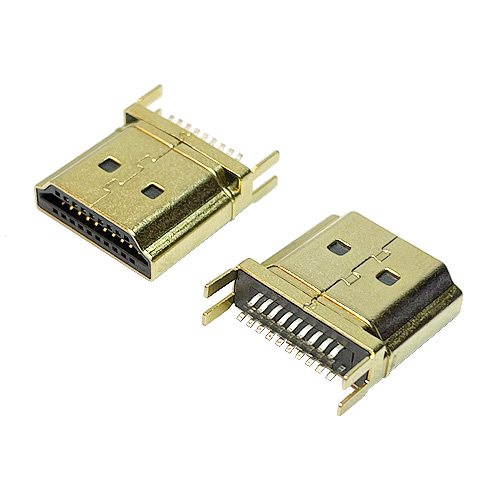
Xian HeGuangdong Xianhe Technology Group Co., Ltd
-
Hot search:SEMI package cleaning machine

Xian HeGuangdong Xianhe Technology Group Co., Ltd
In the fast-paced world of technological advancement, seamless connectivity has emerged as a cornerstone of modern living. Among the various connectivity standards, HDMI (High-Definition Multimedia Interface) has established itself as a linchpin for transmitting high-quality audio and video signals. Within the realm of HDMI, two primary types, namely Type A and Type B, hold significant importance due to their distinct capabilities and applications.


HDMI Type A: The Pioneer of High-Definition Connectivity
HDMI Type A, the standard that started it all, made its debut in 2003 when the need for a comprehensive audio and video interface became paramount. This type of connector features a 19-pin configuration arranged in a single row. Its rectangular shape with beveled edges allows for secure and effortless insertion into compatible ports.
Versatility Beyond Boundaries:
One of the most striking features of HDMI Type A is its unparalleled versatility. This connector can handle a wide range of video and audio formats, making it compatible with various multimedia devices. From traditional standard-definition content to the latest 4K Ultra HD resolution, HDMI Type A can effortlessly transmit it all. This adaptability has been a driving force behind its adoption in numerous industries and applications.
Audio Excellence:
HDMI Type A is not solely about visual brilliance; it also ensures an exceptional audio experience. It supports both compressed and uncompressed audio formats, making it capable of transmitting high-definition audio streams. Formats like Dolby TrueHD and DTS-HD Master Audio are seamlessly carried through HDMI Type A connectors, enhancing the auditory dimension of home theaters and gaming setups.
Universal Acceptance:
The widespread acceptance of HDMI Type A can be attributed to its ubiquity across consumer electronics. Blu-ray players, gaming consoles, computers, projectors, and TVs often come equipped with HDMI Type A ports. This prevalence has transformed the connector into a universal bridge between entertainment devices and high-definition displays.
HDMI Type B: Stepping into the Pro Zone
While HDMI Type A has conquered the consumer market, HDMI Type B, introduced alongside HDMI 1.3 in 2006, caters to more specialized applications. This connector features 29 pins, arranged in two parallel rows, and is designed to address the demands of professional audiovisual setups.
Higher Resolutions, More Possibilities:
HDMI Type B steps up the game by supporting even higher resolutions and refresh rates compared to its Type A counterpart. This makes it a preferred choice for applications like digital cinema projectors, medical imaging displays, and other scenarios where uncompromising visual fidelity is paramount.
Dual-Link Delight:
One of the defining characteristics of HDMI Type B is its dual-link capability. This allows it to transmit two separate HDMI signals simultaneously, opening doors to innovative applications. For instance, it enables the connection of two separate displays to a single source, delivering distinct content streams to each.
Power in Length:
Another notable advantage of HDMI Type B is its enhanced ability to maintain signal integrity over longer cable lengths. This characteristic makes it an ideal choice for installations where devices are physically distant from one another. Whether it's a large auditorium, a sprawling conference room, or a vast event space, HDMI Type B ensures that the audio and video quality remains uncompromised.
The Future Landscape:
As technology continues to evolve, so do the demands for higher resolutions, greater color depth, and immersive audio experiences. While both HDMI Type A and Type B have been instrumental in shaping the connectivity landscape, newer iterations like HDMI 2.1 have emerged to meet these evolving needs. HDMI 2.1, for instance, supports 8K resolutions, higher refresh rates, and advanced gaming features like Variable Refresh Rate (VRR). As a result, HDMI Type B, despite its prowess, might face competition from these newer, more advanced standards.
In conclusion, HDMI Type A and Type B connectors have been instrumental in revolutionizing the way we connect, transmit, and experience multimedia content. From universal compatibility to specialized professional applications, these connectors have left an indelible mark on the technological landscape. As we look toward the future, the legacy of HDMI Type A and the specialized capabilities of HDMI Type B continue to shape the trajectory of high-definition connectivity.


SweepWechat

SweepPersonal wechat